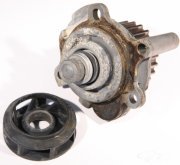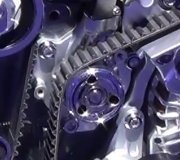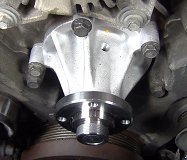Just saw your second post. Once you get the crankshaft to turn, you can perform a cylinder leakage test if you can find a tester. Check at an auto parts store. Many of them rent or borrow tools and they might have one.
You put the crankshaft at top dead center for the cylinder you want to test. That's easy to find for cylinder number one. For the rest, you can screw a whistle into the spark plug hole. It will whistle while the piston is coming up on top dead center for the compression stroke. Stop turning the crank when the whistling stops. Screw the tester's hose into the spark plug hole, then connect it to a compressed air source. Air will be forced into the cylinder at about 30 psi, then you can observe the percent leakage and check in four places to determine what is leaking. If a head gasket is leaking you'll see bubbles in the radiator or in your case, you might be able to hear the hiss through a radiator hose.
The other sources of leakage are an intake valve, (hissing at the throttle body), exhaust valve, (hissing at the tail pipe), and the piston rings, (hissing at the oil cap or dip stick tube). This is a much more informative test once a compression test has indicated there's a problem. Also, a leak in a head gasket can be way too small to have an adverse effect on a compression reading.
Friday, September 9th, 2016 AT 10:21 PM



